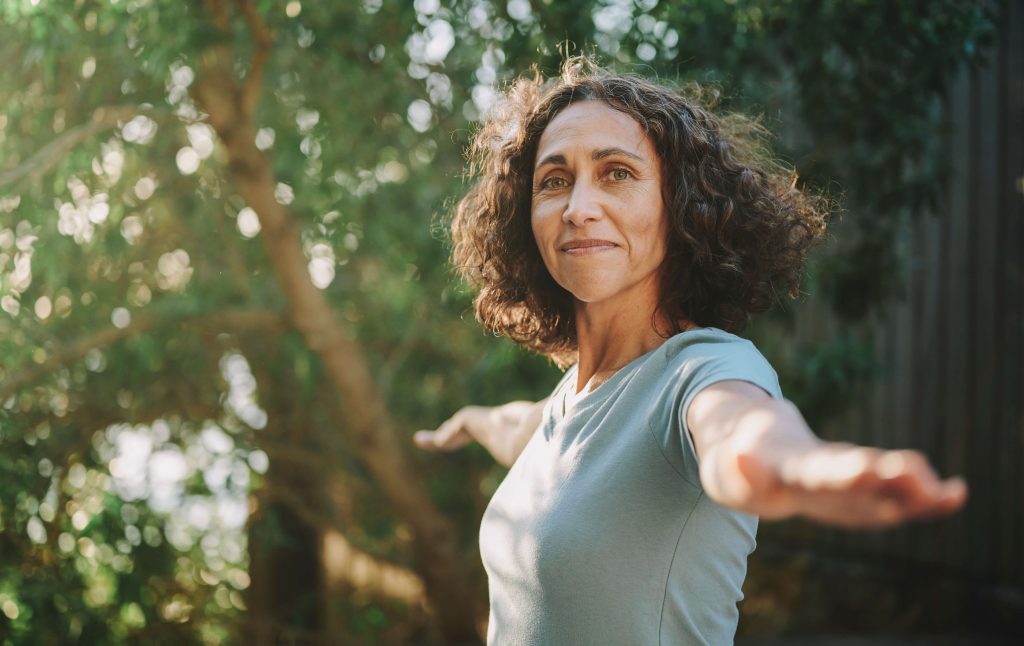DEXA Scan in Kelowna
The DXA system provides detailed measurements of the body by looking at bone density, lean mass and fat mass. This information is critical for accurately assessing the state of a patient or athlete’s health and defining successful treatment plans and training programs.
DXA: The Gold Standard
DXA (Dual-energy X-ray Absorptiometry) scan uses high end technology for body composition assessments and bone densitometry.
Some benefits include:
- Most accurate way to measure body fat, lean mass and bone density.
- High precision, high accuracy and high repeatability due to less impact from external factors than other methods.
- The most detailed information than any other method, with clear, easy-to-understand visuals.
What To Expect From A Dexa Scan
A person does not need to prepare — they can eat and drink as usual on the day of the procedure. However, anyone taking a calcium supplement may need to stop taking it around 24 hours before the scan.
Before The Scan
A technician performs the scan on an outpatient basis. A person may need to remove any metal objects that they are wearing, such as jewelry and eyeglasses.
At the start of the scan, the person lies on their back on the exam table. The technician places the imaging device above them and the X-ray generator below them.
During The Scan
During the procedure, the imaging arm moves slowly over the person’s body while a beam of low-dose energy passes through them. It is crucial to remain still throughout the scan. When the purpose is to measure bone density, the technician tends to scan the hips and spine. These are common locations of fractures in people with osteoporosis.
When the purpose is to measure body composition, the machine scans the entire body to check skinfold thickness at specific sites. Using an equation, it is possible to use these measurements to calculate body fat percentage.
After The Scan
There are no side effects of a DEXA scan, so you can leave immediately and continue your normal daily activities. Your scan images and analysis will be printed out and given to you after the scan. Your results can return data on your percentage of visceral fat, weak points within the body, warning signs of possible health issues and diseases, and more. This information offers you a comprehensive look at where your body is healthwise.
/
Advanced Body Composition Assessment
DEXA scan provides the most precise information about body fat, muscle, and bone composition, and helps track changes in body composition over time.
Fitness enthusiasts, athletes, and dieters often use body composition scans to get a baseline of where they are now, and to objectively measure their progress.
- Accurate measurement of body composition provides valuable information for assessing, monitoring the human body.
- Most people are used to stepping on a scale from now and then. But monitoring weight – while helpful – is not a precise way of assessing health and fitness progress.
- Body composition measurement with dual-energy X-ray absorptiometry (DXA) can look beyond weight and the traditional body mass index (BMI) to determine body fat distribution.
/
Athletic Performance
The DXA scan can help inform individualized training and nutritional programs for athletes.
- Most accurate way to measure body fat, lean mass and bone density to inform training programs that are designed to meet the goals of building muscle, losing fat or both.
- Ability to see muscle imbalances with right- and left-side specific information.
- Monitor changes in body composition to maximize effectiveness of nutritional plans.
Weight Loss
The DXA scan provides an accurate picture of muscle, bone, and fat mass to aid in the design of customized weight loss programs for patients.
- Fat Mass Index replaces BMI for a more accurate assessment of obesity.
- Measure visceral adipose tissue and total body fat percentage for a better overall assessment of patient’s health.
- Monitor weight management programs with the ability to see if weight loss is from fat stores or muscle.
Cardiovascular Health
DEXA scans can be used to screen for calcium build-up in major blood vessels, known as abdominal aortic calcification (AAC). This build-up is a hardening of the abdomen's largest artery, which can potentially be identified early with a DXA bone density scan.
- Abdominal aortic calcification has been found to identify women at higher risk for heart attacks and strokes.
- DXA scans can also identify the Visceral fat (VAT) around your vital organs, which can increase a risk of metabolic disturbances, cardiovascular disease, type 2 diabetes, and breast cancer.
- Having a baseline measurement and tracking changes over time can help identify any concerning trends and enable early intervention and prevention.
Bone Densitometry
DEXA is today’s established standard for measuring bone density. The bone densitometry test is used to measure how strong bones are.

It is commonly used to identify osteoporosis, a condition that causes a decrease in the density of bones resulting in fragility, and to determine a person’s risk for developing fractures.
- Bone densitometry is a safe, accurate, and painless way to measure bone density.
- The DXA system takes an x-ray image and your results are compared to normal bone density values based on your age, gender, and ethnicity to determine if you have high, normal, or low bone density.
- This information, combined with risk factors and previous fracture history, is used to determine your risk of osteoporosis and bone fractures.
Am I Overweight?
Are you in the healthy range? Use this tool to calculate your Body Mass Index (BMI) now to know your risk for obesity-related diseases.
How Healthy Are My Bones?
Take the 1-minute quiz to determine your risk for developing osteoporosis.
DexaCan Plan Options
The DEXA scan is the gold standard procedure for body composition analysis. We offer multiple plans for you to choose from.
Find out if the DXA scan is right for you. We can help.
Body Composition Scan - $249
- Visual image of precise location of bone, lean mass, and fat mass.
- Body fat % compared to age group.
- Precise mass measurements of specific areas of the body.
- Calculations of total mass, fat mass, and lean mass.
- Estimated amount of visceral fat (the type of fat around internal organs associated with medical disorders such as metabolic syndrome, cardiovascular disease, and type 2 diabetes.).
- Body fat, fat mass and lean mass values over time.
- Ideal for athletes, fitness enthusiasts, and body builders, as well as those seeking weight management.
*Patients will receive a copy of the scan report.
Advanced Body Composition Scan - $499
- Visual image of precise location of bone, lean mass, and fat mass.
- Body fat % compared to age group.
- Precise mass measurements of specific areas of the body.
- Calculations of total mass, fat mass, and lean mass.
- Estimated amount of visceral fat (the type of fat around internal organs associated with medical disorders such as metabolic syndrome, cardiovascular disease, and type 2 diabetes.).
- Body fat, fat mass and lean mass values over time.
- Visual comparison of gradual changes in bone and mass.
- Breast health screening based on BMI and body fat %.
A follow-up consultation with our physician is included with the Medical Body Composition Scan. Based on the results of the report, the doctor can provide recommendations for further testing, treatment, or referrals to specialists if necessary.
*Patients will receive a copy of the scan report.
Bone Density Scan - $499
- Evaluation of bone density loss to determine the risk of osteoporosis.
- Values are compared to others of the same age and gender (Z-scores) or healthy young adults at peak bone mass (T-scores).
- Results help track bone health changes over time.
The Bone Density Scan includes a radiologist report and a consultation with our doctor to review the results. The physician can then provide recommendations or referrals based on the findings.
*Patients will receive a copy of the scan report.
Heart & Stroke Risk Assessment - $499
- Screening to detect and identify individuals who are higher-risk for heart disease by assessing Abdominal Aortic Calcification (AAC).
- Lateral DXA is non invasive, has low radiation exposure, and is relatively inexpensive compared with CT; a helpful screening tool for vascular calcification.
- Measurements can help detect anomalies earlier.
This assessment includes a radiologist report and a consultation with our doctor to review the findings. In addition to recommendations and medical interventions, the physician may also provide advice on lifestyle modifications that can help manage or prevent medical conditions.
*Patients will receive a copy of the scan report.
Who Should Get a DEXA Scan?
As this test will provide detailed information regarding various components in your body, anyone can use it.
If you are simply curious about your health, planning to get healthier, or losing weight, you could get this scan in order to gain the best possible insight regarding your body composition.
When To Get Your First DEXA Bone Densitometry Scan?
Increased age
Many individuals lose bone mass as they get older. The National Osteoporosis Foundation recommends people at average risk get a DEXA scan starting at 65 (women) and 70 (men).
Family history
If one or more family members have had osteoporosis or more than one fracture, you could be at a higher risk for bone loss at an earlier age.
Previous fracture injuries
Breaking a bone, especially after age 50, may be a sign that you’re at greater risk. Porous (less dense) bones break more easily.
Medications
Some medications, including some for cancer and those used after an organ transplant, can weaken your bones.
Your overall health
Many chronic medical disorders can make your bones more likely to break. Risky conditions include rheumatoid arthritis, lupus, diabetes, liver disease and kidney disease.
You may need a follow-up bone-density test after several years, depending on the results of your first test.
Why choose DexaCan for your private DEXA body scan?
Leading Expertise
Advanced body composition analysis delivered by our experienced practitioner
Rapid Access
Contact us now for an appointment, with or without a referral.
Innovative Diagnostic Imaging
The best technology available for assessing obesity, cardiovascular, and other metabolic diseases.
Safety & Comfort
Quick 3-5 minute scan. No injections, non-invasive, painless with no patient preparation required.
Please contact us with questions, or to schedule an appointment. We are always happy to hear from you.
"(Required)" indicates required fields



